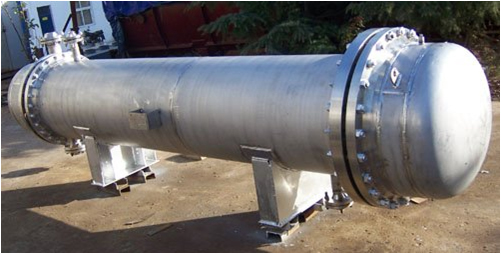Heat transfer is a critical process in many industrial applications. Proper heat transfer allows industrial processes to operate efficiently and safely. There are various types of heat transfer equipment that enable effective heat transfer in industrial settings.
Industrial Heat Exchangers
One of the most common types of heat transfer equipment in industrial facilities are heat exchangers. Heat exchangers are devices designed to transfer heat between two or more fluids or mediums. There are several types of heat exchangers used for different applications:
Shell and Tube Heat Exchangers
Shell and tube heat exchangers consist of a shell with a bundle of tubes inside. One fluid runs through the tubes while another fluid flows over the tubes within the shell. The fluids exchange heat through the tube walls without mixing. Shell and tube exchangers provide efficient heat transfer and are suitable for high-pressure applications.
Plate Heat Exchangers
Plate heat exchangers use a stack of thin, corrugated metal plates to transfer heat between fluids. The fluids flow between alternating hot and cold plates. The plates maximize surface area for heat transfer. Plate heat exchangers have a compact design and are easy to disassemble for cleaning.
Air Cooled Heat Exchangers
These exchangers use fans or finned tubes to transfer heat to the ambient air. Hot process fluid flows through the tubes while air passes over the fins or fans and absorbs heat. Air cooled exchangers provide economical cooling without the need for cooling water.
Other Heat Exchanger Types
There are many other industrial heat exchanger designs, including regenerators, fluid heat exchangers, scraped surface exchangers, and more. The type of heat exchanger is selected based on the application requirements.
Maintaining Efficient Heat Transfer
To achieve optimal performance, heat exchangers and other heat transfer equipment must be properly maintained. Buildup of scale or fouling inside the equipment can greatly reduce heat transfer efficiency. Regular cleaning and removal of debris is essential.
Monitoring fluid flow rates and pressure drops can identify reductions in performance. Automated flush systems can be installed to periodically clean equipment during operation. Water treatment, such as anti-scale chemicals, may also help minimize fouling and scaling.
Routine inspection and testing ensures heat transfer surfaces remain clean and undamaged. Any leaks, cracks or blocked passages need to be repaired. Thermal insulation around the equipment should also be checked and maintained.
The Benefits of Efficient Heat Transfer
Efficient heat transfer in industrial processes provides many benefits, including:
- Allows processes to operate at required temperatures for optimal production.
- Minimizes energy loss, reducing operational costs.
- Prevents overheating and damage to industrial equipment.
- Reduces safety risks associated with uncontrolled heat buildup.
- Decreases downtime required for equipment cleaning and maintenance.
- Maximizes production capacity of industrial facilities.
- Extends service life of expensive industrial equipment and systems.
Proper selection, operation and maintenance of heat transfer equipment like industrial heat exchangers is essential for safe, efficient and cost-effective industrial processes. As technology advances, newer heat transfer equipment designs continue to emerge, providing innovative heat transfer solutions.
Conclusion
Heat transfer is an integral part of many essential industrial processes. Industrial Heat exchangers and other specialized heat transfer equipment enable the precise temperature control required in chemical plants, refineries, power plants and other facilities. Maintaining these systems properly is crucial to maximizing process efficiency and safety. As industrial applications become more complex, continued innovation in heat transfer technology will remain vital for operational success.

















